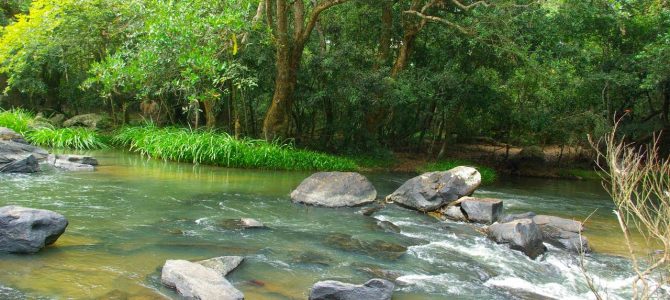Filter coffee is a favourite beverage in two states in India. Tamil Nadu is the highest consumer of coffee. But the consumption is not matched by the production. Another state, Karnataka, produces far more coffee beans than Tamil Nadu does. The hilly and forested district of Coorg produces more coffee than any other region in India. Apart from coffee plantations, Coorg has so many things to see. In this post, we will see what makes Coorg a great destination for your next travel.
Geography of Coorg
The name Coorg is British. The original name of the district is Kodagu. The headquarters of the district is at Madikeri or Mercara. Coorg is a land-locked district and is bordered on three sides by districts of Karnataka. The Dakshina Kannada district is to the north of Coorg. Mysuru district is to both the east and the south. To the west, Coorg is bordered by the Kasaragod and Kannur districts of Kerala.
Cauvery river that flows through south Karnataka and central Tamil Nadu starts at Tala Kaveri in Coorg district. The river is a major part of Coorg and features several eco-parks and other landmarks along the river side. There are also several waterfalls that form smaller rivers joining Cauvery.
Other than urban areas like Madikeri and Somawarapeta, the rest of Coorg is covered in evergreen forests of the western Ghats. This makes for a great wildlife preservation opportunity. Promptly, the Karnataka government has a tiger reserve at Nagarahole, a reserved forest at the border of Coorg and Kerala.
People of Coorg
The natives of Coorg are classified as tribals and speak Kodava language. Nearly all of them are fluent in the state language Kannada, while a handful of them have also learnt the language of Dakshina Kannada, i.e. Tulu. Malayalam and Tamil are also spoken by the people in the southern part of the district. Hindi is spoken sparingly, mostly by the people related to the tourism industry.
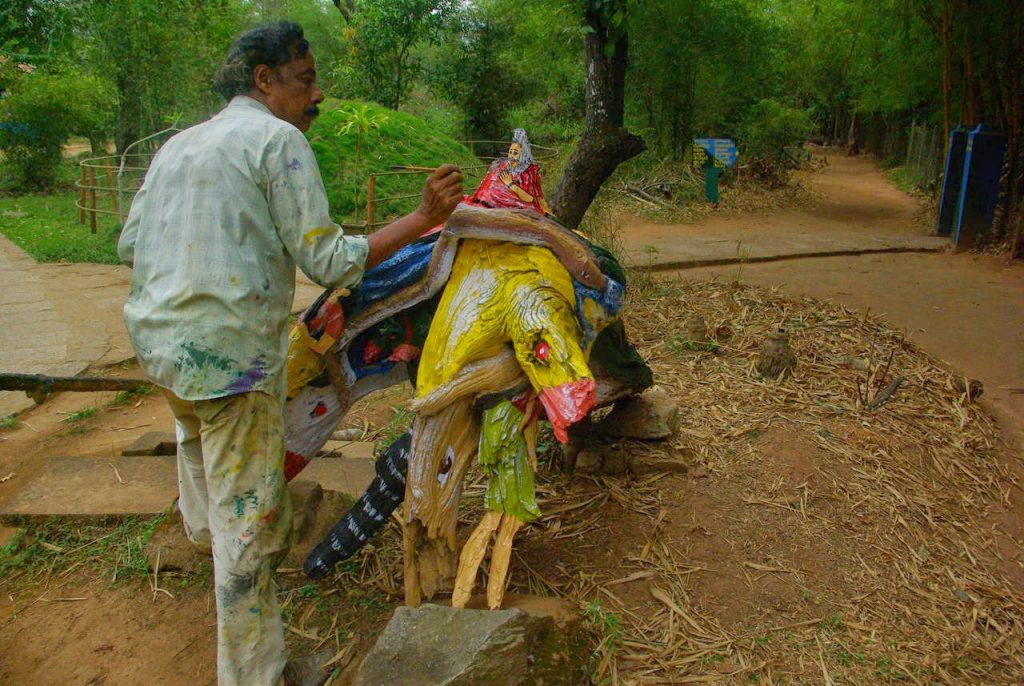
A Kodava (native of Coorg) using the contours of a tree stump to turn it into a work of art.
The people of Coorg are mostly farmers, with coffee being the most commonly grown crop. Industries related to agriculture makes up the majority of occupations in Coorg. Tourism is also a big industry in Coorg. While the district was a getaway for the people from Mangaluru, Bengaluru and Mysuru in the past, these days people from around India have discovered the charms of Coorg and have made it a must-see destination.
Here are the most interesting things to see in Coorg district
Nisargadhama eco park
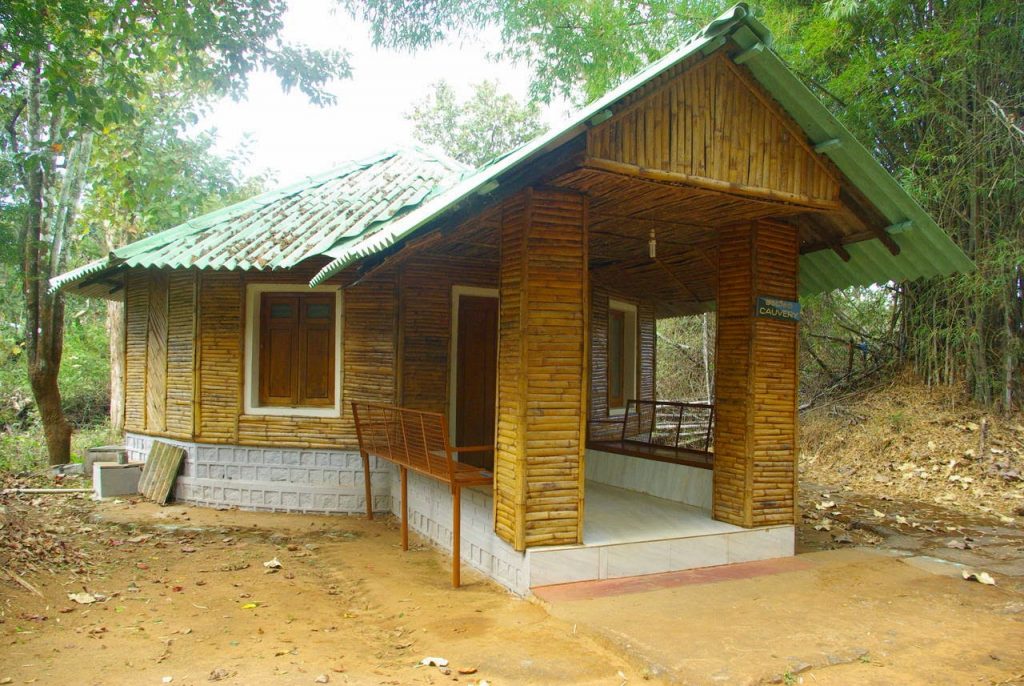
Forest cottage at Nisargadhama
Driving from the Mysuru-side, Nisargadhama is one of the first places you’ll reach. Nisargadhama is an eco park on the bank of Cauvery river. It features bamboo plantations, walking trails, elephant ride, tree houses and cottages that can be booked for overnight stay. It is relaxing to walk along one of the trails that are parallel to the river. The town nearest to Nisargadhama is Kushalanagara.
Tala Kaveri
Tala Kaveri is worshipped as the source of Cauvery river. There is a temple dedicated to Goddess Kaveri. Tala Kaveri can be reached from Coorg’s headquarters Madikeri.
Harangi dam
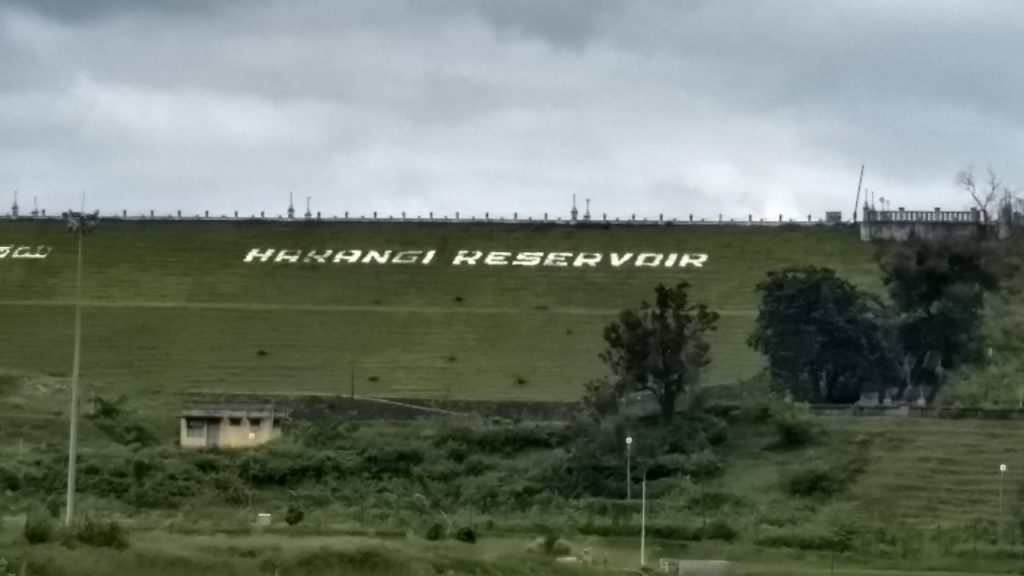
Harangi dam is the first dam along the course of the Cauvery river.
Harangi is the first dam along Cauvery river’s path. It is to the east of Tala Kaveri. The dam features an eco-park and a few walking trails. Harangi can be easily reached from Kushalanagara.
Dubare elephant camp
Also near Kushalanagara, Dubare elephant camp is an elephant training camp by the riverside. The camp also features a resort where one can stay overnight. Activities in the area include watching trainers work with the elephants and taking coracle rides in the river. The elephants at Dubare get to enjoy one special occasion every year, which is to take part in the Navratri procession in Mysuru.
Namdroling monastery
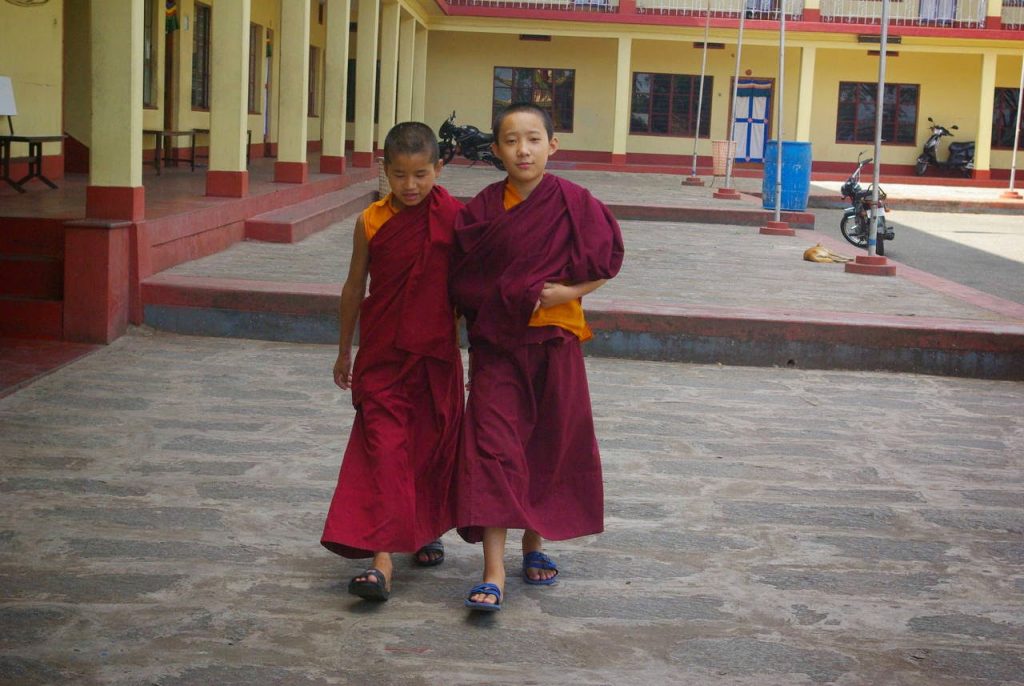
Young monks at Namdroling monastery, Bylakuppe.
In the village of Bylakuppe near Kushalanagara, we can visit the Buddhist monastery Namdroling. It is one of the biggest Buddist teaching centres in India, with 5000 lamas (male and female), living in the monastery. The monastery was started by those on exile from Tibet, as the government of India gave them a various parcels of land for their refuge, one of them being in the forests near Cauvery river.
Waterfalls
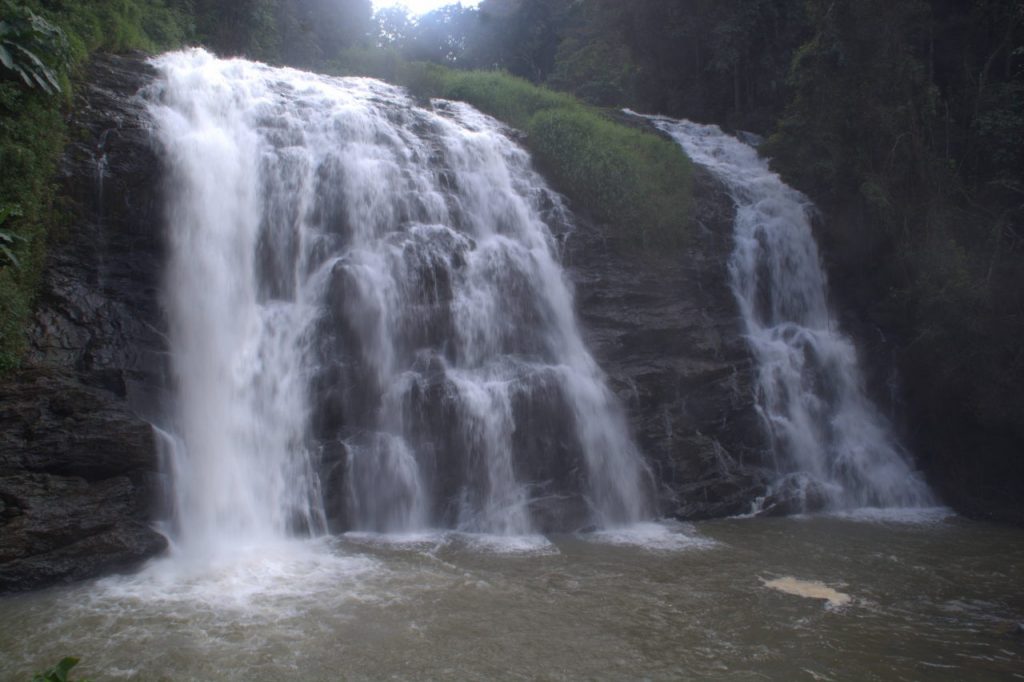
Abbe falls, Coorg
There are four waterfalls worth enjoying in Coorg district. Abbey waterfalls is very close to Madikeri town. This is also the most popular and crowded waterfall. The Abbey falls are enclosed inside an eco-park with entrance fees and can be reached by taking a staircase. The falls can be seen from a viewing platform.
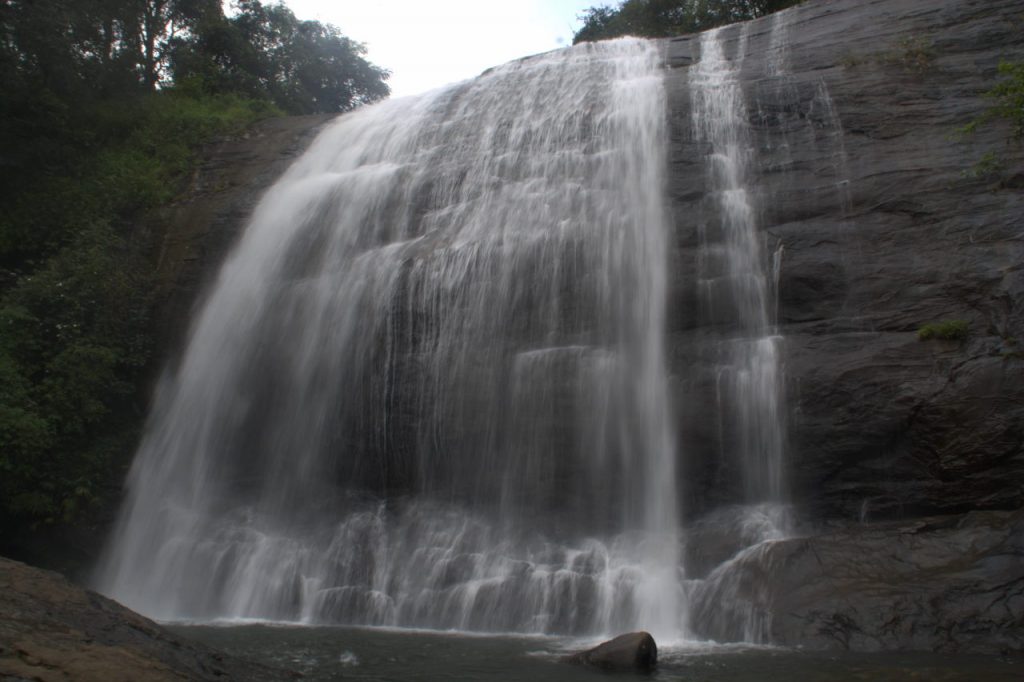
Chelavara waterfall, Coorg
The second waterfall, Chelavara, is on the Ghat road descending from Madikeri towards Mangaluru. This waterfall is quite obscure and you won’t find many visitors here. In fact, people who drive from Bengaluru and Mysuru completely miss this beautiful spot. Only those who drive from Mangaluru or Udupi get to see this fall since it is on their way. In contrast to Abbey, you won’t find any complex with entrance fees, staircase or viewing platforms. You need to park your vehicle on the shoulder of the highway and tip toe your way through a very short forest trail to reach the fall.

Stunning view of Mallalli waterfall, Coorg.
The most spectacular waterfall is Mallalli. This waterfall is on the highway that goes from Madikeri to Hassan and is at the northern end of Coorg district. There are two views for the waterfall. The first is from the entry to the hiking trail. From here you can see the falls from a point above it. It takes a small hike downhill to reach the base of the waterfall, which is another way to view the fall.
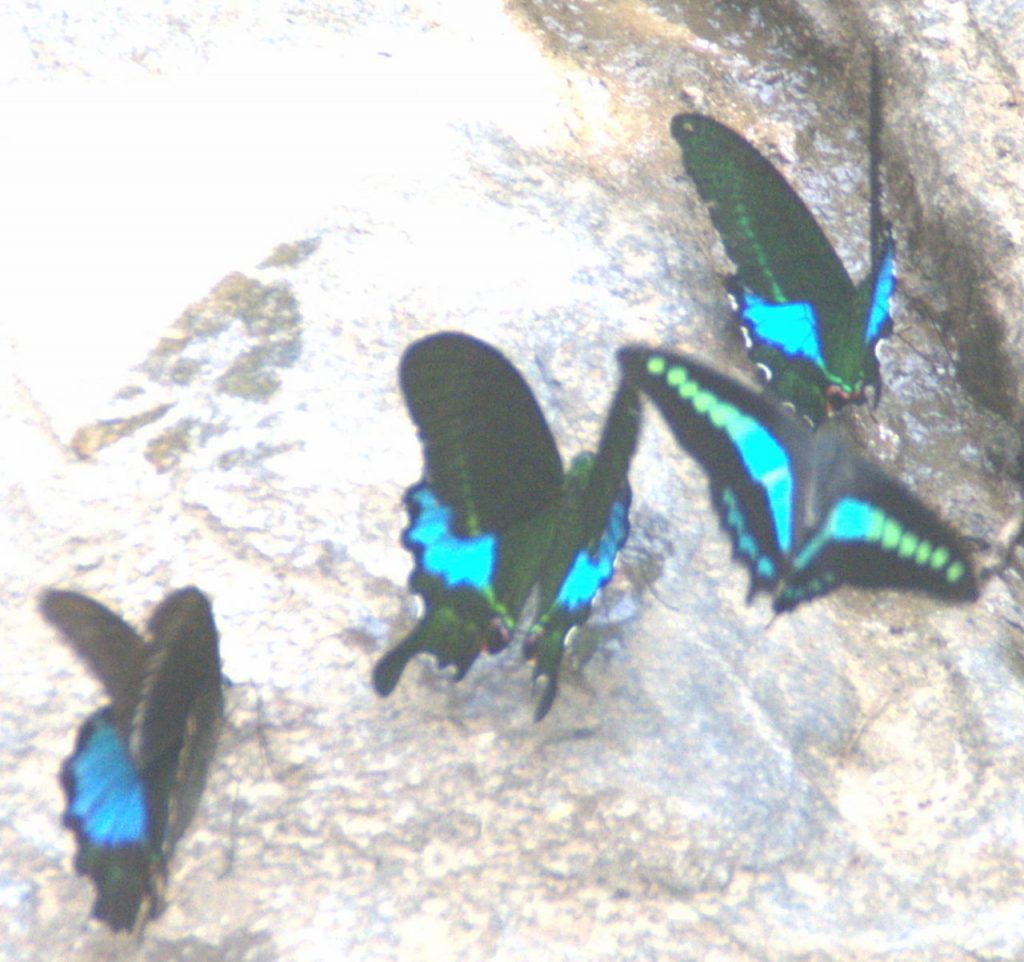
There are several of these butterflies, known as Blue flutter, near Irpu waterfall.
Irpu waterfall is on the border of Karnataka and Kerala. It is part of the Brahmagiri / Aralam forest reserve. Irpu waterfall can be reached by taking the Madikeri – Nagarahole road. Irpu waterfall area is known for its colourful butterflies.
Nagarahole forest reserve
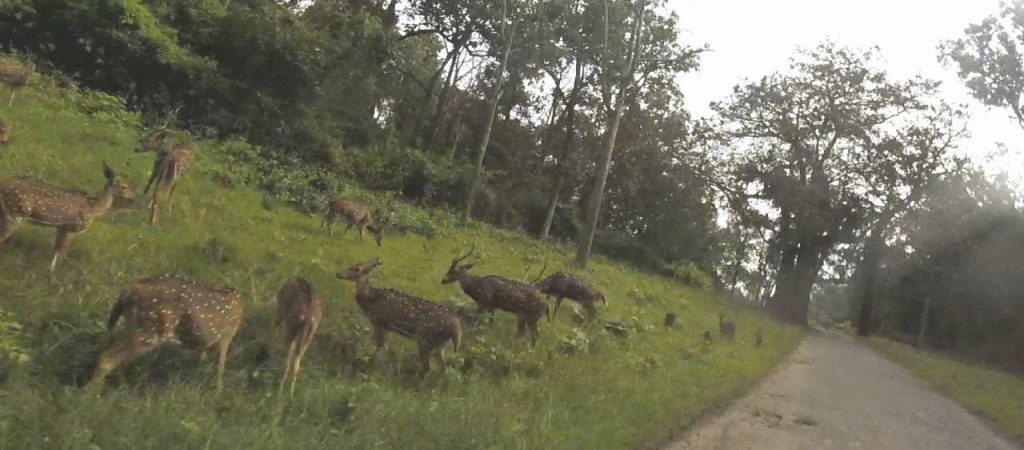
Spotted deer while driving through Nagarahole reserve forest.
There are two ways to enjoy the Nagarahole reserve. The first way is to take a canter / jeep safari for a fee early in the morning. The canter / jeep rides will take you through forest trails inside the forest where your own vehicle cannot reach. This is usually a good way to spot animals that are deeper in the wild, e.g. tigers, wild elephants, gaurs, etc. One more way to explore Nagarahole is to simply use the tar road inside the reserve to travel from here to Hunsur in Mysuru district. Of course, this drive is free of cost, only requiring that you enter your name and vehicle registration number at the forest gate near Kutta village. You cannot use your vehicle to go into forest trails. But even from the tar road, you have guaranteed sighting of spotted deer, langurs, wild goats, boars and a variety of birds.
Raja’s seat
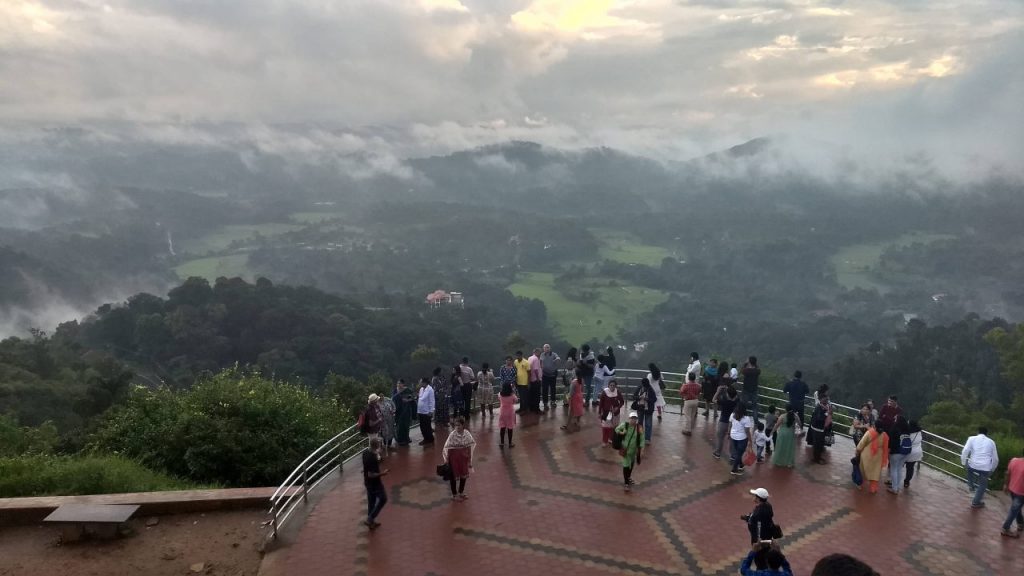
Sunset viewpoint at Raja’s seat park
Raja’s seat is a park built by Raja Doddaveerarajendra of Kodagu. The park is so named because of a special seating chamber that he prepared for himself. The seating chamber overlooks the beautiful view of the Ghats of Coorg that ascend from Dakshina Kannada side. There is a better place to enjoy this view though. At one end of the park is a railing that gives you a clear view of the afore-mentioned view. The view is especially spectacular during monsoon.
Apart from the view, the Raja’s seat park has flower beds, lawns, walking paths and fountains.
Madikeri fort
While it served as a fortress for the rulers of Coorg, the Madikeri fort today is a museum that exhibits some artefacts from around Coorg. Of special importance is a chamber dedicated to two army heroes, both of whom are from Coorg district: General Thimayya and Field Marshal Cariappa. Both of them were instrumental in monumental moments for the Indian Army. Field Marshal Cariappa formed the structure of the Indian Army after India received independence. The unification of several princely states, especially the defying Hyderabad, between 1947 – 1950 was effective due to Cariappa. He can be attributed as the one who made the slogan ‘Jai Hind’ official for the Indian Army. General Thimayya was instrumental in India winning the 1962 Indo-China war and the Indo-Pak wars in 1965 and 1971.
Gaddige / Raja’s tomb

The citadel of Madikeri fort, now a museum
Gadige monument is at the northern end of Madikeri town. It features two twin Hindu memorials built partly in Muslim style, especially the dome. The memorials belong to Raja Doddaveerarajendra and Lingarajendra, There is a smaller tomb for the royal priest Rudrappa.
Coffee estate home stay

Home stay in Coorg
Staying in a coffee estate home stay is a unique experience in Coorg. There are several estates. The ones near Madikeri are usually booked quite soon. You should look for estates near Kushala Nagara or Suntikoppa. These areas are less crowded and may offer deals on their estate homestays. Homestay hunting in Coorg is unorganised. Many of the best homestays are in secluded villages with little public transport and you may have to walk / drive a lot to find the best ones. If it is your first time to Coorg or you don’t have time to explore homestays on your own, then you can use a tour operator to book a stay. Alternatively, you can check sites like Make My Trip or Clear Trip for deals online. Not many homestays have a listing online, but you can still find some really good ones. From the Internet, we found a great stay called Forest Flower on a village road forking off the main highway between Suntikoppa and Madikeri. There was no traffic on this road and the ambience at the estate was very peaceful.
What to eat
Home made chocolates: In Coorg, you will find several shops with home-made white, brown and dark chocolates. There are even chocolates with mixed flavours such as pista, orange, apricot and fig. Indulging in good quality home made chocolate is a fun experience in Coorg.
Oranges: Like Nagpur, Coorg has its own variety of oranges that are easy to peel, aromatic and tangy. The oranges are very seasonal and are available after November.
Filter coffee: Coorg is the home of filter coffee and you should give in to your caffeine cravings while you are here. In fact, Amalgamations group, the company that owns Cafe Coffee Day, sources all of its coffee beans from a variety of plantations in Coorg district. They own some plantations, while at the same time they also have contracts with others’s plantations.
What to buy
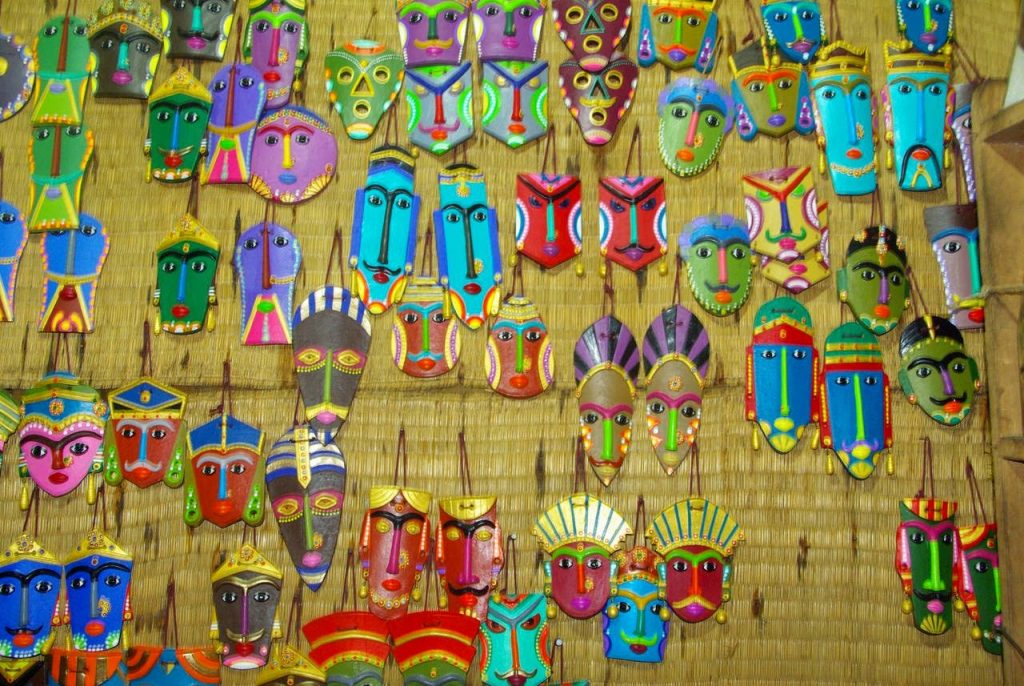
Coorg clay masks
Coffee: The most obvious choice is coffee beans or roasted coffee powder. While at it, you can also purchase a decoction filter vessel or a French press, which are necessary to make concentrated coffee decoction from roasted beans or powder.
Home-made chocolate: We have already spoken about this from the last paragraph.
Spices and essential oils: These two product categories are common and abundant in good quality across all the hill stations in the Western Ghats of south India, be it in Karnataka, Kerala or Tamil Nadu.
Honey: Coorg is home to several apiaries and you can get different types of honey drawn by different breeds of bees from different forest flowers.
Fruit wine: There are no grapes in Coorg, but the locals use different fruits to make wines. We tried a wine made of passion fruit.
Clay handicrafts: There are several types of tiny handicrafts made of baked clay. Coorg masks are quite popular.
Getting to Coorg
Coorg is not connected by air or rail. You need to disembark at nearby cities and continue in road transport, which is the only form of transport available in the district.
Here are the options.
Air: The nearest airports are Mysuru and Mangaluru. From both cities, you can take a Karnataka Saarige (Karnataka State Transport Bus) to Madikeri or Kushala Nagara.
Rail: The nearest railway stations are Mysuru, Hassan and Mangaluru. Madikere or Kushala Nagara can be reached through Karnataka Saarige.
Road public transport: Bengaluru – Coorg buses use the highway Bengaluru – Madduru – Mysuru – Hunsur – Kushala Nagara – Madikeri. So you can take a state bus from Bengaluru / Mysuru. From coastal Karnataka, buses are available from Mangaluru and Udupi. If you are travelling from interior Karnataka, e.g. from Chikkamagaluru or Shivamogga, then there are buses available from those cities and they take the highway via Hassan.
Self-drive: Following highways lead to Coorg district.
Bengaluru – Madduru – Mysuru – Hunsur – Kushala Nagara – Suntikoppa – Madikeri. This highway is the best if you are travelling from Tamil Nadu, Andhra Pradesh, Telangana, interior Maharashtra and also the rest of India. This is most commonly used route to reach Coorg. You will need to drive on this highway anyway if you intend to cover Nisargadhama, Harangi dam, Dubare elephant camp or Namdroling monastery.
Shivamogga – Bhadravati – Chikkamagaluru – Belur – Hassan – Gorur – Arakalagudu – Shanivarasanthe – Somawarapete – Madikeri. This route is the best if you are driving from Belgaum, Bijapur, Davanagere, Shivamogga or Chikkamagaluru. Mallalli waterfall is situated on this route.
Kasargod – Subramanya – Sampaje – Madikeri or Kannur – Taliparamba – Iritty – Kunnoth – Virajapete – Madikeri are two routes you can use if you are driving from Kerala. The second route is close to Nagarahole and Irpu waterfall.
Mangaluru – Putturu – Subramanya – Sampaje – Madikeri is a route you should follow if you are driving from coastal Maharashtra, Goa or coastal Karnataka. This route in our opinion is the most beautiful since it involves ascending a Ghat from sea level to about 3800 feet and involves many beautiful waterfalls, valley views and hairpin bends along the way. The Chelavara waterfall is on this route.
Getting around Coorg
Your personal vehicle is the best option around the remote places in Coorg. Buses only cover the main highways, i.e. to Mysuru, Hassan and Mangaluru. Places like Dubare camp and Namdroling monastery are tucked away in little hamlets off the highway. So are places like Mallalli fall. If you were to use mass transport, you can only cover Nisargadhama and Abbey fall.
Taxis and auto rickshaws are available within the towns and villages of Coorg, but you will realise that your expenses shoot up very fast if you intend a comprehensive coverage of the district like ours.
Conclusion
Nestled in the Western Ghats and caressed by Cauvery river, Coorg is a district that is worth a visit and stay of at least 2 nights. You can stretch your trip for upto a week, keeping 3 days for sight-seeing and another 3 just to laze in a coffee estate homestay. You will come away from Coorg’s forests and streams completely recharged.

